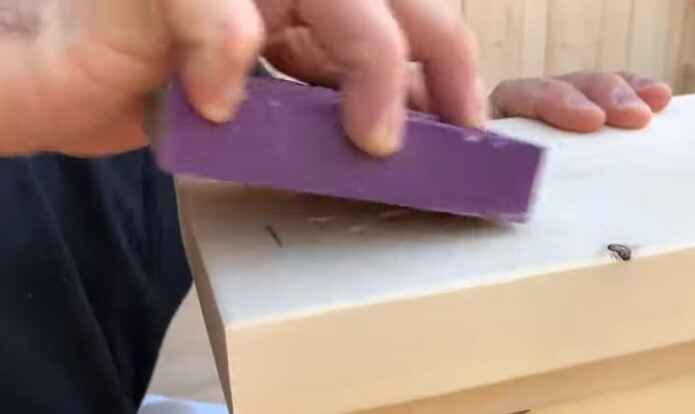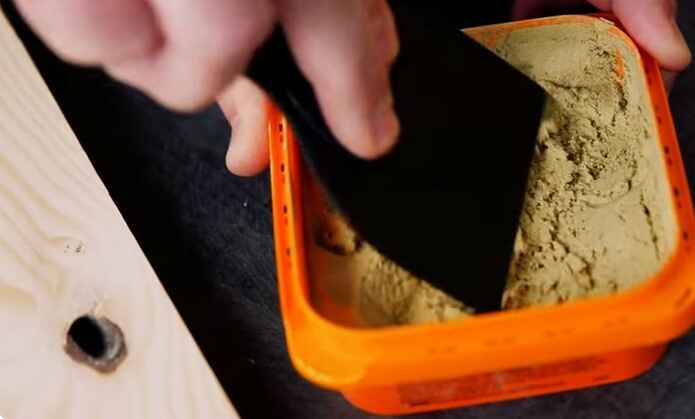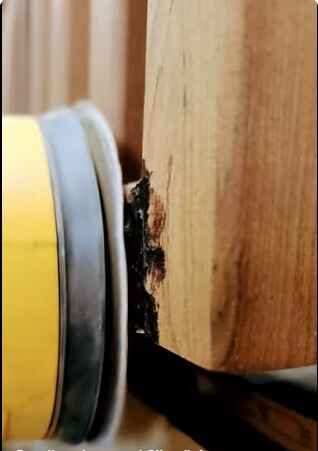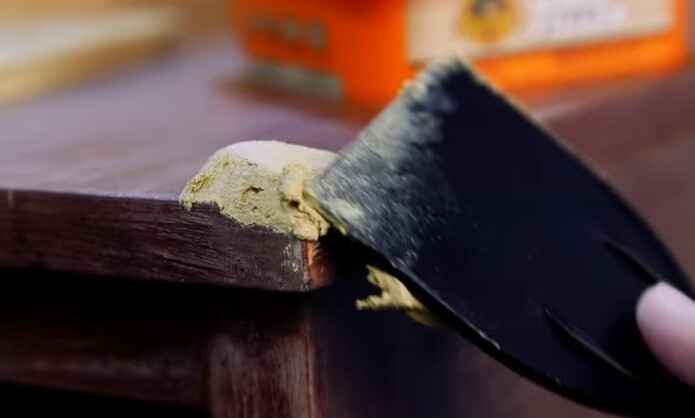Yes, you can sand wood filler. Once it's dry, use fine-grit sandpaper to smooth the surface. Sand in the direction of the wood grain for the best results.
Embarking on a woodworking project often involves the use of wood filler to achieve a flawless finish. Yet, the question lingers: Can you sand wood filler? As a woodworking enthusiast, navigating the intricacies of this crucial step is pivotal for a polished outcome. In this guide, we'll explore the ins and outs of sanding wood filler, uncovering the secrets to seamlessly blending it with the surrounding wood surface. Let's delve into the world of woodworking finesse and discover the art of refining wood filler with precision.


Wood filler repairs cracks, holes, and other minor defects in wood surfaces. It can also be used for cosmetic purposes like blending colors or filling minor imperfections. Wood filler is available in paste and putty form, making it appropriate for different types of repairs. It's an easy-to-use product that can help restore wood surfaces to a smooth finish. When applied properly, it can make your wood look like new!
Can you sand wood filler?
Yes, you can sand wood filler. Sanding wood filler is essential for ensuring that your finished project looks even and professional. When applied correctly to a surface, the wood filler can create a smooth transition between two surfaces and fill any small cracks or holes in the material being filled.
How to sand wood filler?

Sanding wood filler is a quick and easy way to create a smooth, perfect finish on your woodworking projects. Here's how to get the job done quickly and accurately:
1. Prep:
Ensure you have all the supplies needed for this project: sandpaper of various grits, a dust mask, and goggles.
2. Apply:
Spread the wood filler over the area you need to repair using a putty knife or spackle tool. Allow it to dry completely before beginning to sand.
3. Start Coarse:
Begin with coarse-grit sandpaper (such as 80 grit). Start sanding in a circular motion, ensuring even coverage.
4. Switch Grits:
Move to medium-grit sandpaper (120 or 150 grit). This will help to remove the coarser scratches left by the first layer of sandpaper.
5. Finish Fine:
To create a perfectly smooth finish, use fine-grit sandpaper (180 or 220 grit). Continue to work in circular motions until the wood filler is completely smoothed.
6. Clean:
Remove all dust from sanding with a tack cloth or vacuum.
7. Seal:
To finish the project, apply a sealant such as a varnish, lacquer, or shellac.
Following these steps will ensure that your woodworking projects have a smooth finish. With some patience and practice, sanding wood filler can become second nature!
How long does it take for the wood filler to cure?

Wood filler, also known as wood putty, is a popular choice for filling in the cracks and holes of furniture, making them look more seamless. Many people want to know how long does it take for the wood filler to cure?
The curing time of wood filler depends upon several factors, such as the brand you're using and what type of wood you're applying it to. Generally, most brands recommend waiting 24-48 hours before sanding or painting over the applied area. To accurately assess how long your project will take to cure properly, be sure to read and follow manufacturer instructions carefully.
What are the benefits of sanding wood filler?

Sanding wood filler comes with many benefits. Here are five of the most notable:
1. Smooth Finish
Sanding wood filler helps create a smooth finish and prevents any unsightly bumps or ridges from developing in your workpiece. This process can be achieved using a variety of sanders, such as orbital sanders, belt sanders, and hand sanding tools.
2. Durability
Sanding wood filler provides a more durable final product as it helps to compact the filler and removes any excess material, making it less susceptible to cracking or damage over time.
3. Improved Adhesion
Sanding wood filler prior to painting or staining encourages adhesion of the product and ensures that it will remain securely attached to the surface.
4. Cleaner Look
Sanding wood filler helps to create a cleaner look overall. This is because sanding removes excess material and minimizes visible lines or creases in your workpiece.
5. Enhanced protection
Sanding wood filler helps to seal any open pores in the wood and prevents moisture from seeping into the surface and damaging it. This added layer of protection helps to prolong the life of your workpiece.
What are some tips for sanding wood filler?
Sanding wood filler is important in creating a smooth, professional look for your finished piece. Here are seven tips to help you get the best results:
1. Start with Coarse Grit Sandpaper:
When sanding wood filler, it's best to start with coarse-grit sandpaper (40-80 grit) to remove any excess material quickly.
2. Use an appropriate Sanding Block:
To get the best results when sanding wood filler, use a sanding block to distribute pressure and keep the surface level evenly.
3. Move in One Direction:
Sand wood filler in one direction only, going with the grain of the wood and avoiding circular motions.
4. Change Grits Gradually:
As you work, gradually switch to a medium (80-120) and then fine (180-220) grit sandpaper to smooth the surface.
5. Vacuum Regularly:
To keep dust from building up on the wood filler, vacuum regularly with a shop vacuum or handheld vacuum.
6. Use a damp cloth for Final Touch-ups:
After complete sanding, use a moistened cloth to pick up any remaining dust particles and give the wood filler an even finish.
7. Protect your Work Area:
When sanding wood filler, protect your area with drop cloths and plastic sheeting to prevent dust from spreading.
With these tips, you'll surely achieve a smooth finish when sanding wood filler!
Final Words
You can sand wood filler once it's dry. Wood filler is a great way to repair small holes in wood surfaces. It's easy to use and dries quickly so that you can get back to your project quickly. Be sure to wait for the wood filler to dry before sanding it down. Otherwise, you'll just end up with a mess. Once it's dry, though, sanding wood filler is no problem.